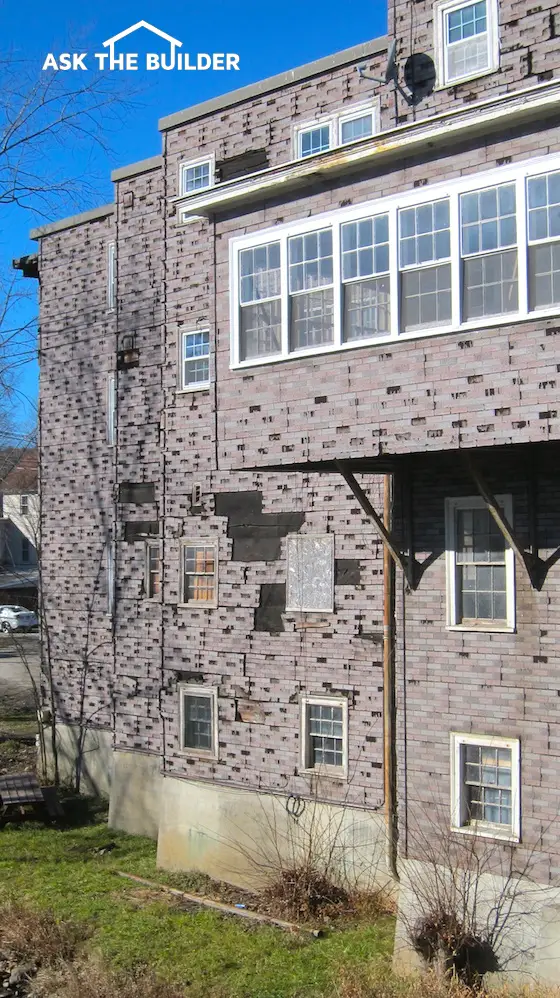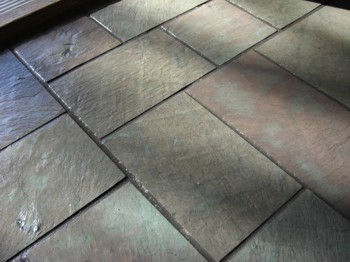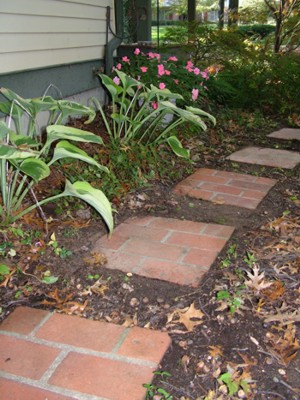Vinyl siding is a fascinating building material. I was fortunate enough to be working full time in the construction industry when this product made its debut and blossomed into a major building-product category. As happens with many other building products, vinyl siding pushed and bullied aluminum siding out of the spotlight. I clearly remember my childhood home getting aluminum siding on it. The cost, in 1958, was $400 for labor and material. My Mom and Dad fretted about that decision for hours at the kitchen table.
If you've seen how fast vinyl siding can be installed, you may be easily tempted to read a vinyl-siding how-to booklet or guide. If you've been hypnotized by a home-improvement television show that tempts you into thinking you can tackle installing vinyl siding yourself, wake up. It's not as easy as it appears. It takes considerable skill to get professional results. What's more, you need help in most cases as well as an assortment of ladders and hand tools.
Vinyl-siding colors usually are muted, lighter tones. There's a reason for that. Deep colors absorb and retain the sun's heat. Vinyl siding reacts violently to heat, and expands significantly. If you don't install vinyl siding correctly, it can buckle, warp and distort from the sun's rays. Deep colors would simply make the situation worse. Some paints can be applied to this siding to create different vinyl-siding colors, but beware painting vinyl siding a dark color.
When you obtain a vinyl-siding cost estimate, don't panic. Rest assured that there is a significant cost for the material, especially for all of the trim pieces that are necessary when the siding abuts windows and doors as well as inside and outside corners. Vinyl siding is a product made primarily from crude oil. If the price of oil is high, vinyl-siding material costs will also go up accordingly.
Then there is the labor involved. Don't underestimate the amount of time and effort required for a typical vinyl-siding installation. There is a considerable amount of time spent in setup, trimming, dealing with utility penetrations in walls and even fighting insects. Dealing with wasp and bee nests is common, especially in warmer months. If you watch siding installers, you'll quickly discover that they spend little time installing the siding. The trim work, caulking and fitting take up a majority of time on the average job.
Because people really like the look of real wood, the vinyl-siding manufacturers discovered long ago that if they took the time to mimic wood, it would make the plastic product more appealing. This is why you see cedar vinyl siding. The patterns of horizontal cedar as well as cedar shingles have been copied for years, and are quite popular products.
Vinyl house siding is appealing to many homeowners. Many of my past clients wanted it installed because of its no-maintenance characteristics. If you live in an urban environment, all you have to do is periodically wash it just like your car to make it look like new. The color in vinyl siding is the same throughout each piece, so even if it gets scratched, you can't tell from a distance. It's fairly immune to denting in warm weather, but hail and other objects can shatter it if the conditions are favorable.
When you start to decide on a vinyl-siding color, take your time. If your house has wood siding on it now, the best way to select a color is to get small cans of paint mixed that match the vinyl siding and it's trim. Remember, you can do a two-tone mixture for your vinyl siding by using complimentary colors for the siding and various trim pieces.
Go ahead and apply the paints you like to smaller areas of your existing house siding, allow it to dry and then step back 50 feet to look at the colors. Look at the colors at different times of day to get the full range of color. Using this inexpensive method, you can make sure you get the perfect color. Who cares that your house looks funny for a few days? After all, the new siding will cover the paint.
If you're thinking of applying home vinyl siding to an existing house, you may want to consider taking existing siding off. Adding vinyl siding on top of wood siding can create issues at doors and windows where they tend to get slightly buried. Taking off the existing siding also allows you to add thicker foam insulation. There are distinct benefits to removing existing siding.
Column QA


